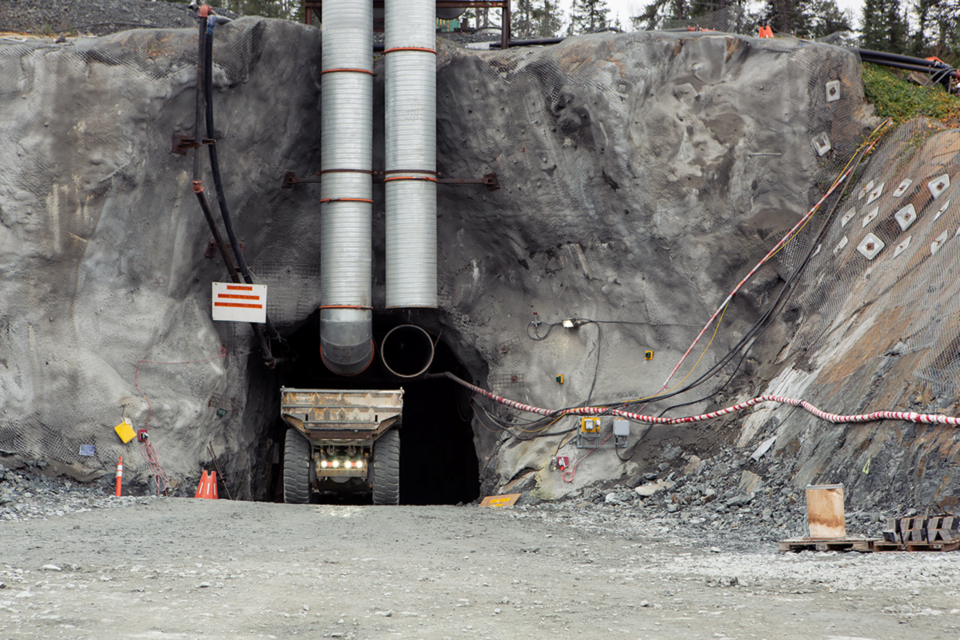Pure Gold Mining president-CEO Mark O’Dea offered a simple explanation for last year’s stumbling production start at its Red Lake mine.
The company began mining at the wrong end of the deposit.
The Vancouver gold miner delivered a conference call update this week on its second quarter results and the progress made at its namesake mine after embarking on an operational “turn-around” process last January.
Soon after entering production last August, the mine began falling short of meeting targets for production, grades and mill throughput. It was hemorrhaging cash with out-of-control operating costs that was rapidly depleting the treasury.
O’Dea said they are now “rounding the corner” of that process and are pointed in a “better and healthier direction.”
Armed with a new resource model and a more accurate mineral resource estimate, costs are under control and gold production is building in a more “predictable and systemic way.”
Want to read more stories about business in the North? Subscribe to our newsletter.
In taking stock of the past year and the lessons learned, the company admitted it didn’t have a clear geological picture of the area around the former Madsen Mine, and began production last summer in the shallower end of the deposit, an area called the McVeigh Zone.
O’Dea described the geometric environment at McVeigh as “wispy, thinner and more complicated,” and of lower grade than the rest of the deposit.
A "profound" conclusion that emerged from a consultant’s report this year was that the “McVeigh Zone was, in hindsight, the wrong place to start this mine,” he said.
They took a back-to-basics approach with a re-examination of the ground and their entire processes to come up with near-term mine plan. A prefeasibility study and new life-of-mine plan comes out later this year.
After 1,700 holes of infill drilling of the Madsen deposit this year, the trend shows gold grades seem to pick up the deeper one goes.
Pure Gold’s production is now transitioning out of McVeigh and into higher grade material in the deeper Austin and South Zones.
Heading into the third and fourth quarters of this year, and into 2023, the company predicts better production performance and higher grades as a greater percentage of material will come from these new areas.
Sign up for the Sudbury Mining Solutions weekly newsletter here.
What suffered in the second quarter was gold production, with 3,509 ounces produced.
Company officials caution not to be alarmed by those numbers, as it's not indicative of what the mine is capable of. Much progress has made behind the scenes that will show positive results later this year, they said.
The turnaround strategy of aggressively attacking costs, restoring liquidity, improving safety performance, and coming up with better mine planning and execution processes has shown progress on all fronts, the company claims.
These “foundational” changes resulted in some bloodletting, both in the executive suite and on the ground at Red Lake, but CFO Chris Haubrich said these “painful, but necessary” decisions to focus on costs were necessary to set up the company’s only mine for long-term success.
Operating and sustaining capital costs were reduced 30 per cent in second quarter compared to the first quarter, amounting to an average of $4 million to $5 million in monthly savings.
"We took a big bite of our costs in the second quarter but there’s a lot more to be done in the quarters to come,” said Haubrich.
The company has refinanced and restructured its debt obligations in recent months to inject millions in cash into their efforts.
On the production side, COO Terry Smith said there’s better communication and collaboration between geology, engineering and miners at the face.
“In short, we have all the different departments speaking to each other, working as a team and making good informed decisions.”
Their reorganization efforts have resulted in 59,000 tonnes of ore identified in the stopes, averaging 5.9 grams per tonne, good enough for two months of production.
The third quarter is getting off to a better start. July was a record month for ore mining, the company is pleased with the processing mill’s performance this month, and the last weekly gold pour of 41 grams was a record.
“Our team has strong conviction that great results will continue to roll off the operation in the near term as we expect to achieve site level cash flow this quarter,” said Smith.
On the health and safety side, the company said they’ve cleaned up their act and their efforts are showing results by putting together a string of 128 injury-free days, thanks to new mine general manager Bryan Wilson.
One analyst on the conference call took the company to task, questioning how the situation at Red Lake could be allowed to become “tortuous” and why months passed without timely updates.
“I guess the short answer is, Mother Nature surprised us in a lot of ways at the beginning of our mine life,” O’Dea replied. Mining in the McVeigh Zone became more geometrically than anticipated and required more drilling than needed, he added.
“We paid the price for that; we all have.”




